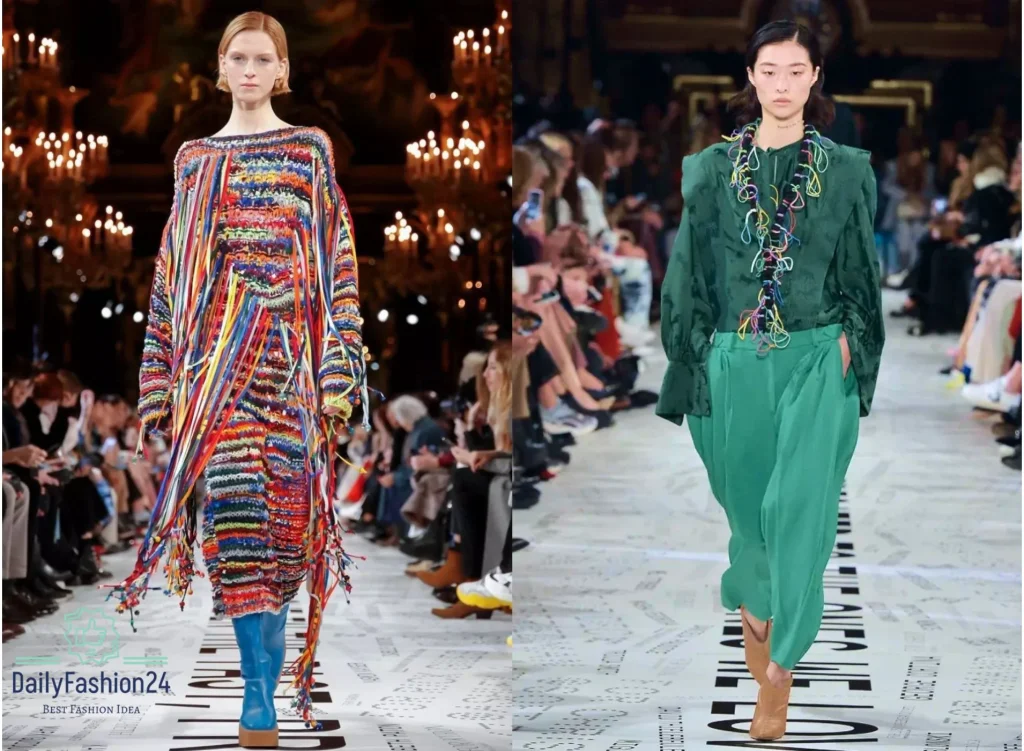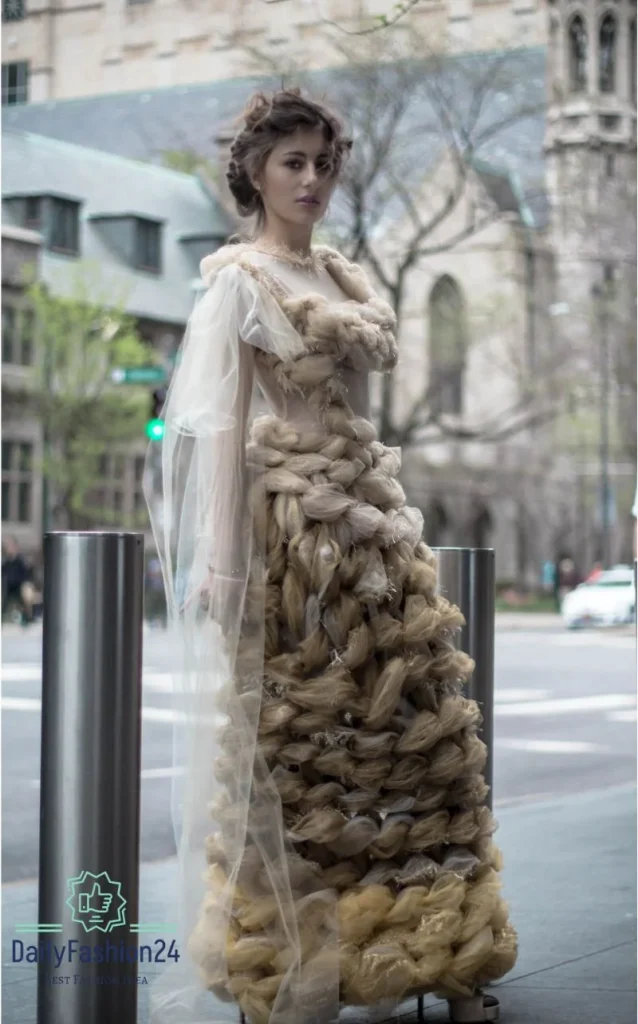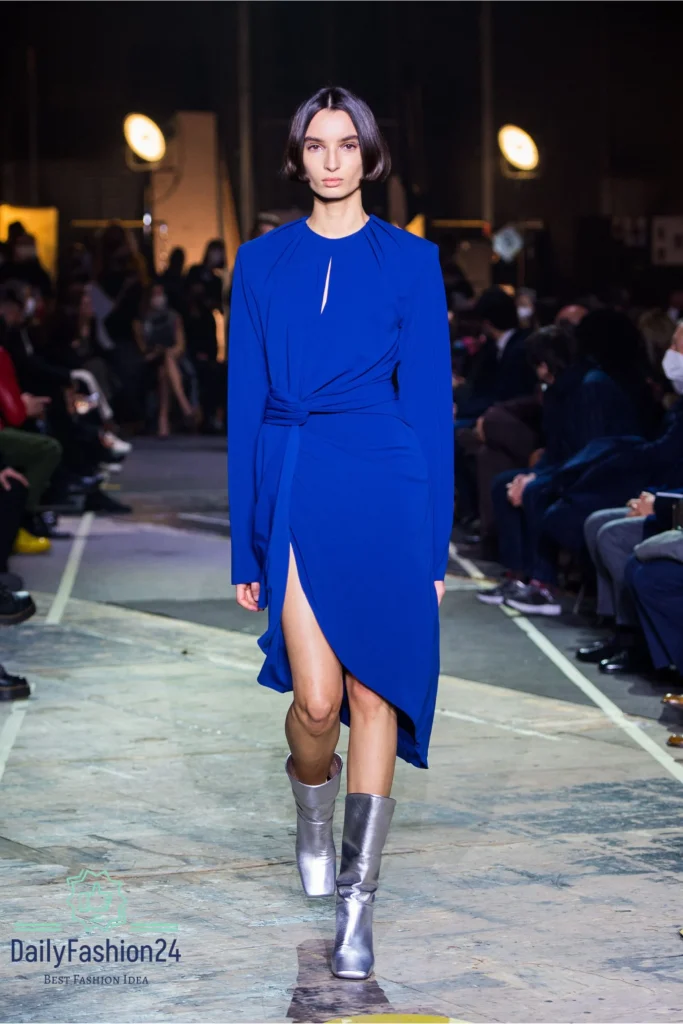
In our ever-changing world of fashion, there is a new breed of designers who marry high-end with earth; Eco Couture. This style epitomizes luxury in which the finesse of couture meets sustainable and eco-friendly practices. But what is Eco Couture and why has it become such a trend for fashion? To understand this dynamic movement we must look into the future.
What does Eco Couture Fashion Style Encompass?
Eco-couture fashion is about mixing luxurious high-end clothing with sustainability. Traditionally, couture means exclusivity, craftsmanship, and quality. It represents tailor-made designs that usually take hundreds of hours to complete as they are painstakingly crafted using artistry. Nonetheless, critics often accused couturiers of going overboard on many occasions starting from wastefulness to use of unethical materials. This perspective has been revised by eco-couturiers who have adopted environmentally friendly sustainable techniques into their production processes.
Sustainable Materials
The typical fabrics used for making eco-couture garments include organic cotton, recycled textiles, green silks, and plant-based fibers among others. Designers may also try out innovative materials like mushroom leather or create clothes from plastics found in oceans. These substances lessen the ecological burden but still ensure that customers buy items that are premium.
Ethical Production

Ethical production is at the heart of eco-couturing. For example, designers consider fair wages, humane working conditions, and support for artisanal skills increasingly important factors when creating their collections. They strive to make beautiful clothes without harming mankind or exploiting labor.
Zero Waste and Upcycling
Zero waste practices are implemented by many eco-couturiers during their manufacturing steps meaning every piece will be used up properly while extra material can be re-utilized rather than thrown away. Upcycling is also prevalent in this type where old/vintage clothing items are made into new bespoke items.
Limited Production Runs
Additionally, eco couture often involves limited production runs just like traditional couture. These garments are either made to order or produced in small quantities, which minimizes wastage and ensures each piece is unique and limited edition.
Timeless Design
EEco-Couturegoes against the grain of fleeting trends by emphasizing timeless design. It focuses on creating clothes that will last for years rather than encouraging people to buy into fast fashion culture. This also encourages consumers to invest in fewer, higher-quality items, reducing the overall demand for new clothing production.
Why is Eco Couture Important?
Today’s fashion landscape has seen significant development through the emergence of eco-couture because it addresses two major concerns; environmental sustainability and ethical production. As more consumers become aware of fashion’s impact on the environment, they are seeking alternatives to fast fashion with its wasteful and unsustainable practices.
The sector is one of the world’s most polluting industries, leading to water pollution, carbon emissions, and excessive waste generation. Eco-couturiers provide an alternative perspective that luxurious designs can still be environmentally friendly.
Additionally, there is a growing concern for the morality of fashion. Fast fashion is often associated with poor working conditions and unfair labor practices in developing countries. Consumers will support Eco Couture if they buy from brands that prioritize their workers’ welfare and respect for their surroundings.
Notable Eco Couture Designers

The following designers have embraced eco-couture and are leading the way in this trend:
Stella McCartney: Known for her commitment to sustainability, Stella McCartneycombines high fashion with eco-conscious practices using innovative materials such as recycled fabrics and sustainable viscose.
Mara Hoffman:The focus of this designer is on sustainability through the use of environmentally friendly textiles like organic cotton and Tencel among others, and incorporating responsible production processes.
Vivienne Westwood: Westwood was a pioneer in the sustainable fashion movement, using her platform to promote eco-consciousness while creating bold, avant-garde designs.
The Future of Eco Couture
It is projected that as consumers increasingly seek out brands that mirror their values, the eco-couture trend will continue to grow. High fashion will keep moving toward an ethical/sustainable future and luxury fashion will probably adopt Eco Couture Fashion Style.
However, it has been a long journey so far. Sustainable fashion still represents just a small fraction of the industry which needs more comprehensive involvement to be mainstreamed. The revolution by many designers and customers toward this paradigm shift may prompt the entire world of fashion toward sustainability.
Conclusion
Eco-couture style is a disruptive force within luxury design embracing green concepts. It shows that elegance plus artistry can go hand-in-hand with an ethical manufacturing process. About tomorrow’s style industry trends, couture acts as a critical milestone in a more sustainable future for fashion houses; therefore whether you are someone who loves fashionable wearables or somebody who considers environmental issues when shopping, then going for “eco couture” may just be your best opportunity of enjoying the fashion industry and at the same time producing a positive impact on our planet.
